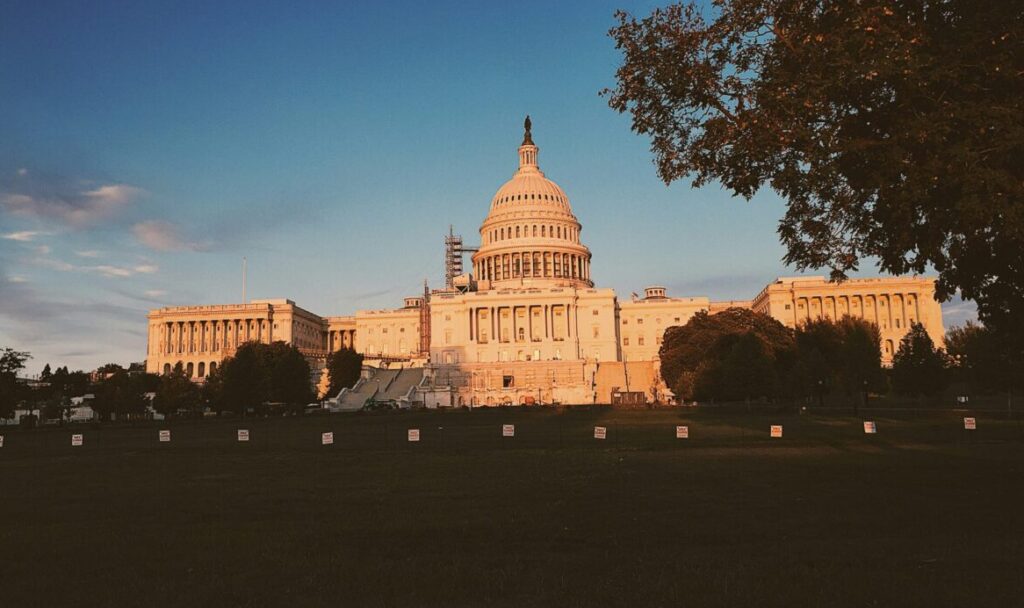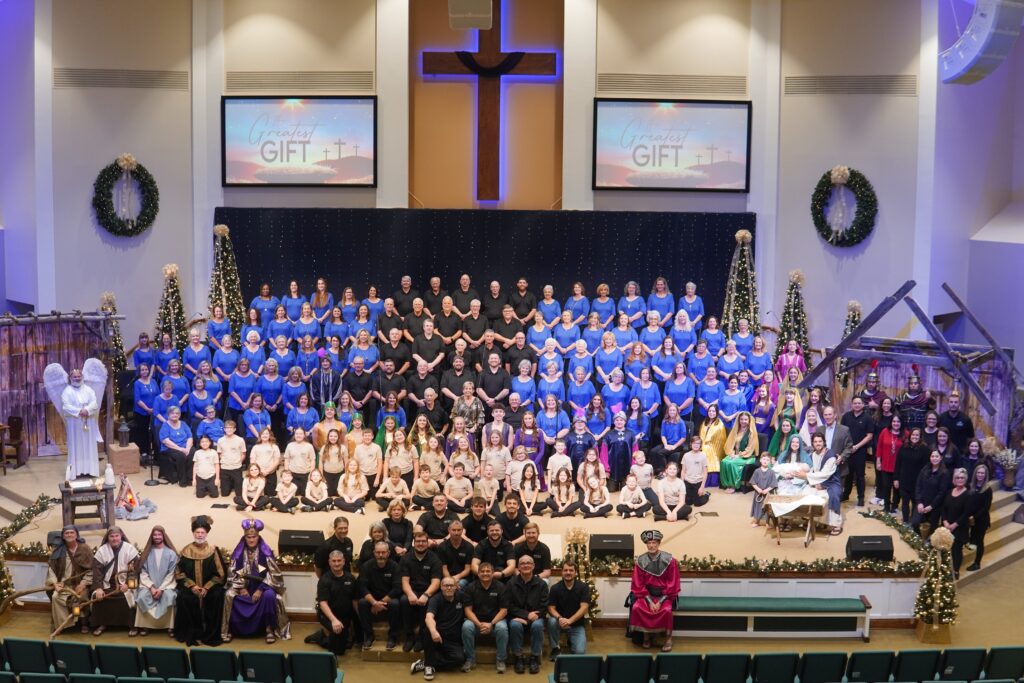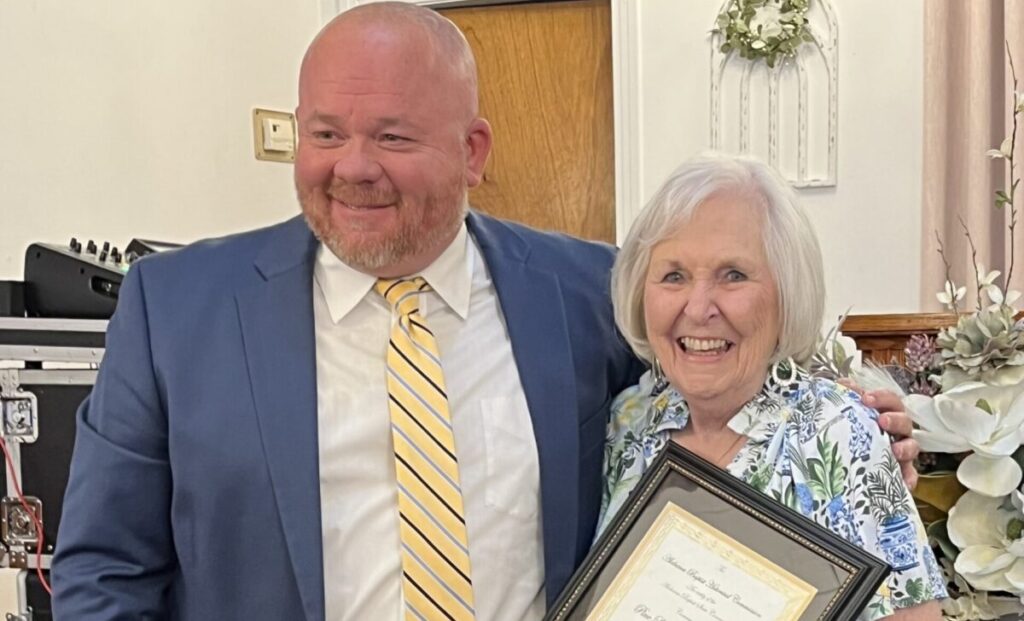Jimmie Sue Fendley devoted roughly two years of her life to it, approaching it as if it were a full-time job. Deborah Galloway has worked on it periodically for about 10 years.
The important thing, though, is that their work is in writing.
“Every church should consider the words of Psalm 102:18,” states Frances Hamilton, executive director of the Alabama Baptist Historical Commission, housed at Samford University.
That verse says, “This shall be written for the generation to come: and the people which shall be created shall praise the Lord.”
What Hamilton is referring to — and what Fendley and Galloway spent many hours on — is church histories.
Hamilton offers several reasons why a church should have a written history:
–So that future generations may praise the Lord for what was done.
–Because Psalm 102:18 is “what we consider a scriptural imperative.”
–In order to add to our own appreciation of the church as it is today when studying its history, beginnings, people and place in the community, as well as why it grew or lost members.
–As a record to “explain from where we came and how we got to where we are now.”
Knowing a church’s history “gives us stronger roots in our faith,” said Galloway. The information lets the reader see how those before struggled to provide a place to worship. It also helps future generations to be aware of these things. Not knowing these things just makes the gap grow wider. Pulling together a church’s history can become a task, though, because of obstacles such as missing records.
That was something both Fendley and Galloway encountered.
Fendley, a member of Pine Bluff Baptist Church in Locust Fork (Blount Association), was able to trace her church’s history back to 1960.
“Beyond 1960, I didn’t have any church records to go by,” said Fendley.
Galloway, who attends Robin Hill Baptist Church, Oneonta, in Blount Association, said the biggest problem she had in tracing her church’s history was that no written records could be located for the first 10 years of the church’s existence. So each of the women took routes to circumvent the problem.
Fendley first contacted Samford University and the Southern Baptist Convention offices in Nashville. From those, she was able to get information dating back to 1880, when the church petitioned to become part of what was then the Warrior River Baptist Association.
“Once I started digging, avenues just seemed to open up,” said Fendley, noting that she followed every lead. “I wanted (the history) to be correct and I wanted it to be complete,” she said.
She checked resources in the local library, looked for legal documents at the courthouse and scoured associational records, searching for anything related to her church. As people in the community learned about her quest, they would offer enlightening information, photographs and documents. Pretty soon, a copy surfaced of the deed for the donated land on which the church sat.
Fendley also gathered all the information she could about early church officers by talking with relatives still living in the community.
She secured a photo and biography of all the church’s pastors she could.
Because she knew the church had been the site of a school, she consulted records of the Blount County Board of Education.
Through her work, Fendley found that her church had been the community meeting place; that the women sat on one side and the men on the other in the early days; that worship was held once a month and the members would go to the service at the Methodist church when it met.
To capture intriguing stories and vital information, Fendley went, with tape recorder in hand, to visit about a dozen older members of the congregation.
“I went to the older members of our church and I’d ask them questions,” said Fendley, adding that they eagerly got out photos and began to relay stories.
Fendley said she still has those tapes. In fact, some of them were played during her church’s 125th anniversary celebration last summer.
“I dug,” she said of the 18 months it took to research and write her church’s history. “I was digging.”
And during those months, “the larger portion of the day was spent on it,” said Fendley.
What resulted was a 340-page history — complete with photos and cemetery census — titled, “Faith, Hope and Love, The Heritage of Pine Bluff Baptist Church, Locust Fork, Alabama 1878–1992.”
Five-hundred copies were printed and have found their way into all regions of the nation. “I’ve mailed our books all over the United States,” said Fendley. She pointed out that two also are in the history collection at Samford University, one is in Oneonta’s library and one in the Blount County museum.
In addition, she made copies of the church records and placed them in safekeeping at a bank so they won’t be destroyed by fire again.
In Galloway’s case of missing records, she used the “father knows best” approach. She went to her dad, J.D. Wilson, a deacon at Robin Hill Baptist for more than 40 years.
Galloway said her father, who passed away in November, became a member of the church shortly after it formed. So he had much information to offer.
She discovered that her dad and his father, Floyd Wilson, had hauled logs for the building in which the church still meets. Her father also was among the first group to be baptized, for which there is a photo to recall it.
Photos are indeed important in church histories, said Hamilton. “They enliven a church history.”
Like Fendley, Galloway approached older members of the congregation to hear their stories. “That’s where I got a lot of the information,” she said.
She took some of the same research avenues as Fendley, as well as checking in the local newspaper. Galloway’s plan of action has also included consulting nearby churches for information because she knew some people were involved in those congregations before joining Robin Hill Baptist.
Hamilton said minutes of sister churches can, indeed, prove beneficial.
“Many times, a church will establish a mission.” Or, Hamilton continued, members will decide to start a church closer to home. Those minutes may mention names of people who became charter members of the church being researched.
In addition to the other materials already mentioned as resources for church histories, Hamilton suggests the reference index to The Alabama Baptist, associational minutes and written associational histories.
Three other sources are the Alabama Baptist Historical Collection at Samford University, the Southern Baptist Convention Library and Archives in Nashville and the Baptist History and Heritage Society, also in Nashville but not part of the SBC.
For both Galloway and Fendley, recording their churches’ histories became family affairs, ones that didn’t stop when the last page of information was printed.
Galloway and her daughter, Beth, followed up with a pictorial history of Robin Hill Baptist Church. That endeavor took another two months.
Fendley and her son, Kenny, felt led to update Pine Bluff Baptist’s cemetery census before the 125th anniversary of the church. Her daughter, Teresa, helped Fendley look for bits of information during the research process.
And incidentally, both Galloway and Fendley are married to church clerks — David Galloway at Robin Hill Baptist and Jim Fendley at Pine Bluff Baptist.
Fendley went the second, third and fourth mile with her research, recording information about the Warrior River Association as well. She again consulted with Samford University and was able to get information from 1818 till 1906, when the name changed to Blount Baptist Association. That information now is in the Blount County museum, she said. “I guess I’m a history nut,” she said with a chuckle. “I think it was well worth the effort.”
Though compiling a church history is beneficial on many plains, Hamilton added two more bits to savor about the process:
–“It’s going to take longer than you expect.”
–Remember that the history is not an attempt to glorify the congregation or individuals. Instead, “our history tells us what God did by using His people.”
Alabama Baptist Historical Commission offers preservation programs
The Alabama Baptist Historical Commission has several programs geared to recognizing and preserving the histories of churches and encouraging research among the younger generation.
Frances Hamilton, the commission’s executive director, said a microfilm program is available free of charge to churches within the Alabama Baptist State Convention.
Two copies are made of a church’s records. The positive copy goes in the special collections of Samford University; the negative copy is kept in on-site storage at the university.
This service, Hamilton said, has been going on since the 1950s.
She added that the university library makes microfilm copies for churches from other denominations.
The second program focuses on celebrating milestones of Alabama Baptist churches.
Hamilton said churches may receive this recognition beginning with the 25th anniversary and on subsequent ones in 25-year increments (50th, 75th, 100th, etc.). To get this special recognition, churches need to notify the Alabama Baptist Historical Commission of the upcoming anniversary well before the anniversary celebration.
“We are always happy to be invited to attend anniversary celebrations,” said Hamilton.
The third effort encourages young people to become interested in their heritage of faith.
Hamilton said two awards have been established to foster such research. The Thomas Shumaker Award is for college undergraduates, while the Hosea Holcombe Award is for 10th-, 11th- and 12th-graders.
Hamilton said these awards recognize research into Alabama Baptist history and writing in order to share the knowledge with others.
To contact the Alabama Baptist Historical Commission, call 1-800-325-9863 or e-mail fdhamilt@samford.edu or llberg@samford.edu. (TAB)





Share with others: